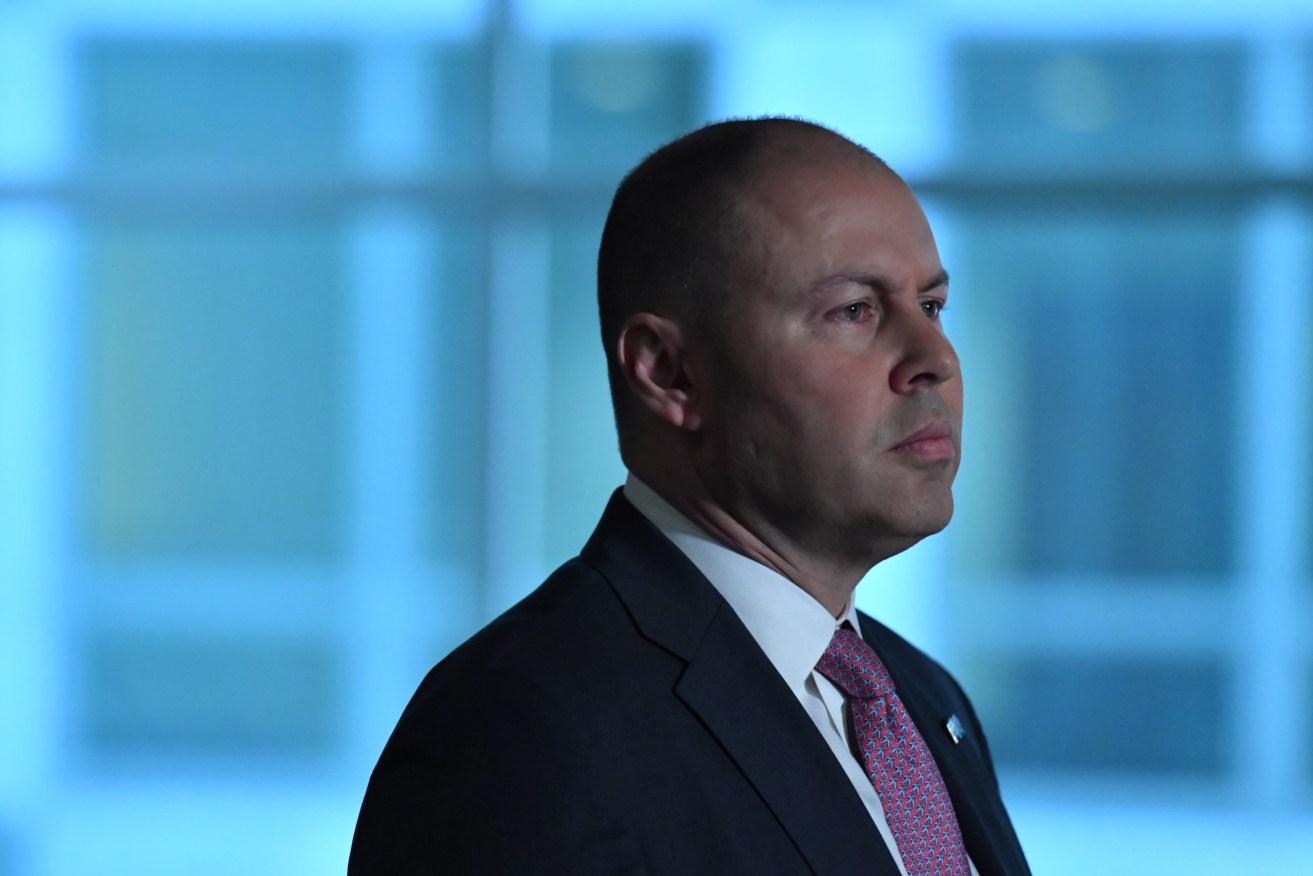Tax cuts, youth employment focus of pandemic Budget
Millions of Australians will have income tax cuts fast-tracked in a federal budget set to focus on driving business investment and job creation, with an expected wage subsidy to employ young workers.

Treasurer Josh Frydenberg. Photo: AAP/Mick Tsikas
Treasurer Josh Frydenberg is preparing to outline the federal government’s plans to guide Australia out of the coronavirus recession.
“I will lay out our economic recovery plan to rebuild the Australian economy and secure Australia’s future,” he told reporters in Canberra on Tuesday.
“Our plan will create jobs. Our plan will create opportunity. Our plan will drive investment. Our plan will grow the economy and guarantee the essential services Australians rely on.”
The budget is expected to contain a wage subsidy scheme designed to get unemployed young Australians back to work.
The scheme will reportedly be limited to people under 35 and given to businesses that recruit young people on JobSeeker payments.
It is eventually expected to replace the JobKeeper program, which ends in March.
A business investment allowance and lump sum cash payments for pensioners will also be unveiled in the budget.
Parliament last year passed the coalition’s three-stage tax cut package.
Bringing forward stage two will see people earning up to $90,000 receive an extra $1000 a year.
Workers earning more than $90,000 a year could pocket up to $2500.
“Tax relief allows more Australians to keep more of what they earn,” Frydenberg said.
“It rewards effort, encourages the power of aspiration, but it also encourages and leads to greater economic activity as people with tax relief spend more.”
It is unlikely the coalition will also attempt to speed up the third stage of its tax plan, which would put people earning $45,000 and $200,000 a year in the same tax bracket.
Many of the budget’s other big ticket items have already been announced.
Road and rail projects worth $7.5 billion will be brought forward to get the Australian economy moving again.
The national broadband network will receive a $4.5 billion upgrade, while almost $1.5 billion is set to be spent on a manufacturing strategy.
The budget is expected to outline an eye-watering budget deficit of more than $210 billion and national debt above $1 trillion.
“The budget position remains sound but then we were hit with a once in a century pandemic and Australia has not been immune,” Frydenberg said.
The treasurer said budget measures would be focused on driving Australia’s unemployment rate below six per cent faster than what was achieved in previous recessions.
Workers in female-dominated industries like hospitality and retail have been among the most severely impacted by coronavirus lockdowns.
Even in the arts and entertainment sectors, where more men are employed, women have borne the brunt of job cuts and reduced hours.
Labor argues the government has done a poor job supporting women through the pandemic.
Many short-term casuals were excluded from the JobKeeper program and childcare workers were the first to have their wage subsidies withdrawn.
Women excluded from the scheme were forced to draw down on their superannuation instead, eating away at their retirement savings.
Labor argues the budget is a chance to “make that right” by creating job opportunities for women and ensuring access to affordable child care.
Frydenberg said he is keenly aware of the issues facing Australian women.
“In tonight’s budget, we’ll be releasing our second women’s economic security statement, helping to boost female workforce participation,” he said.
“We want to get it back to that record high that it was before this crisis began. In tonight’s budget, we’ll also be supporting young people.”
Frydenberg said previous recessions had shown unemployment “goes up the elevator and comes down the stairs”.
“In the 1980s, it took six years to get unemployment back below six per cent from where it started,” he said.
“In the 1990s, it took 10 years. We want to move faster than that and importantly, we want to help women and young people get back to work.”
Many of the government’s pre-budget announcements so far have targeted male-dominated sectors like construction and manufacturing.
Labor leader Anthony Albanese said none of the announcements made so far attempted to rebuild a fairer Australia.
“This week is the second-last budget a Liberal government should deliver for a long, long time,” he told a caucus meeting.
“The government is incapable of delivering a recovery that doesn’t leave people behind and hold people back.”
Albanese said there were about 100,000 fewer jobs in manufacturing today than when the coalition came to power.
He expects the government to be drawn back to attacking pay and conditions through changes to the industrial relations system.
“The government thinks making an announcement is the end of the job,” the opposition leader said.
Prime Minister Scott Morrison has framed the budget as the most important since the Second World War.
Changes to unemployment benefits won’t be included in the budget papers, as the government waits to get more evidence of the economic recovery.
-AAP




